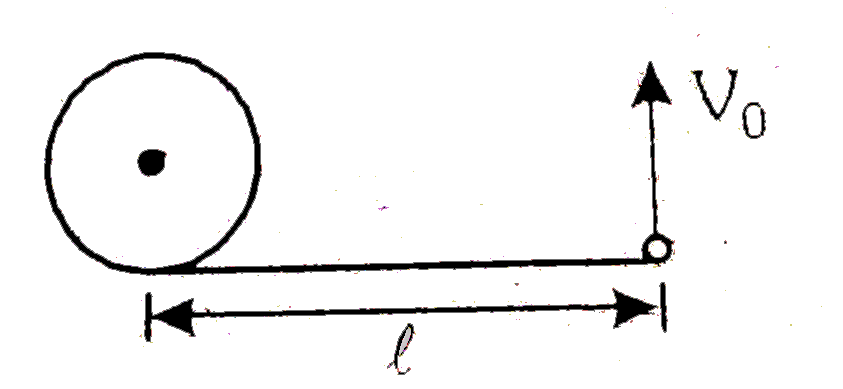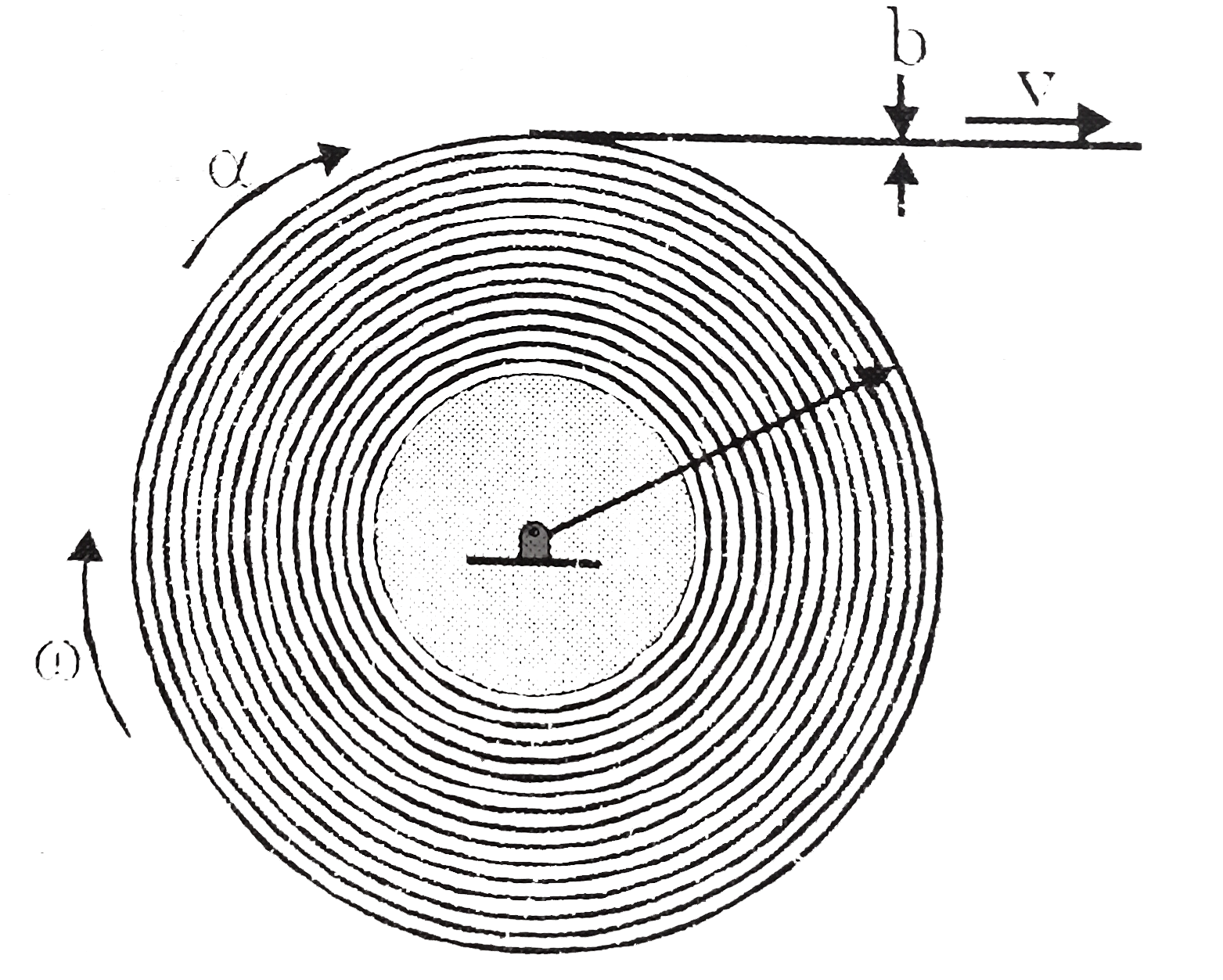Two hydrogen like atoms A and B having NZ ratio equal to 1 have atomic number ZA and ZB A is moving, while B is stationary and both are in ground state. The minimum kinetic energy which A must have to have an inelastic collision with B such that both A and B getting excited is 221eV. If situation is reversed and B is made to stike A which is stationary and both in ground state then minimum kinetic energy which B must have to make an inelastic coliision with both getting excited is 331.5eV. Assume mase of proton = mass of neutron.
The atomic formula ofA and B are :- Solution in Gujrati
_(1).1H&2.4He
_(2).4He&3.7Li
_(4).8Be&6.12C
_(2).4He&3.6Li
The correct Answer is:D
mA=2ZAm
mB=2ZBm
122ZAZBZA+ZBmv2=E
12(2ZAm)v2=ZA+ZBZBE
So 221ZB=331.5ZB
ZBZA=1.5=32
Also
(221)ZBZA+ZB=(13.6)(Z2A+Z2B)34
16.25×43=(Z2A+Z2B)(ZA+ZB)ZB
653=(Z2A+94Z2A)(1+23)
653=13Z2A4×53
Z2A=4⇒ZA=2&ZB=3
Topper's Solved these Questions
- TEST PAPERSBOOK - ALLEN CHAPTER - TEST PAPERSEXERCISE - part-2 physics
73 Videos
- TEST PAPERSBOOK - ALLEN CHAPTER - TEST PAPERSEXERCISE - part-2 physic
48 Videos
- TEST PAPERSBOOK - ALLEN CHAPTER - TEST PAPERSEXERCISE - PAPER 3
92 Videos
- TEST PAPER 4BOOK - ALLEN CHAPTER - TEST PAPER 4EXERCISE - PHYSICS
45 Videos
- UNIT & DIMENSIONS, BASIC MATHS AND VECTOR BOOK - ALLEN CHAPTER - UNIT & DIMENSIONS, BASIC MATHS AND VECTOR EXERCISE - Exercise (J-A)
7 Videos
Similar Questions
A bead is connected with a fixed disc of radius R by an inextensible massless string in a smooth horizontal plane. If the bead is pushed with a velocity v0 prependicular to the string, the bead moves in a curve and consequently collapses on the disc. Then

View SolutionIn a continuous printing process paper is drawn into the press at a constant speed v. Denoting by 'r' the radius of the paper roll at any given time and by 'b' the thickness of the paper. What is the angular acceleraion of the paper roll?

View SolutionA satellite S is moving in an elliptical orbit around the earth. The mass of the satellite is very small compared to the mass of the earth.
View SolutionTwo forces, each of magnitude F have a resultant of the same magnitude F. The angle between the two forces is
View SolutionMatch List I with List II and select the correct answer using the codes given below the lists :

View SolutionA moving hydrogen atom makes a head on collision with a stationary hydrogen atom. Befor collision both atoms are in in ground state and after collision they move together. What is the minimum value of the kinetic energy of the moving hydrogen atom, such that one of the atoms reaches one of the excited state?
View SolutionA mixture of hydrogen atoms (in their ground state) and hydrogen like ions (in their first excited state) are being excited by electrons which have been accelerated by same potential of emitted light are found in the ratio 5:1. Then, find (a) the minimum value of V for which both the atoms get excited after collision with electrons. (b) atomic number of other ion. (c ) the energy of emitted light.
View SolutionAt what minimum kinetic energy must a hydrogen atom move for it's inelastic headon collision with another stationary hydrogen atom so that one of them emits a photon? Both atoms are supposed to be in the ground state prior to the collision.
View SolutionA and B are two hydrogen like atoms such that m_(B)=2m_(A) . Also, the number of protons and neutrons in the two nuclei are equal. Given that difference of photon energy corresponding to the first Balmer lines emitted by A and B is 2.667eV . Let Z_(A) and Z_(B) be the atomic numbers of A and B respectively.
View SolutionTwo hydrogen like atoms A and B having (N)/(Z) ratio equal to 1 have atomic number Z_(A) and Z_(B) A is moving, while B is stationary and both are in ground state. The minimum kinetic energy which A must have to have an inelastic collision with B such that both A and B getting excited is 221 e V . If situation is reversed and B is made to stike A which is stationary and both in ground state then minimum kinetic energy which B must have to make an inelastic coliision with both getting excited is 331.5 e V . Assume mase of proton = mass of neutron. The atomic formula of A and B are :-
View SolutionTwo hydrogen like atoms A and B having NZ ratio equal to 1 have atomic number ZA and ZB A is moving, while B is stationary and both are in ground state. The minimum kinetic energy which A must have to have an inelastic collision with B such that both A and B getting excited is 221eV. If situation is reversed and B is made to stike A which is stationary and both in ground state then minimum kinetic energy which B must have to make an inelastic coliision with both getting excited is 331.5eV. Assume mase of proton = mass of neutron.
In which of the following case energy of emitted photon will be same (Neglecting recoil of atom)
View SolutionA free hydrogen atom in its ground state is at rest. A neutron having kinetic energy k_(0) collides head one with the atom. Assume that mass of both neutron and the atom is same. (a) Find minimum value of k_(0) so that this collision can be inelastic. (b) If k_(0) = 25 eV , find the kinetic energy of neutron after collision if its excites the hydrogen atom to its second excited state. Take ionization energy of hydrogen atom in ground state to be 13.6 eV .
View SolutionThe minimum kinetic energy of a ground state hydrogen atom required to have head-on collision with another ground state hydrogen atom but at rest to produce a photon is given by
View SolutionAn hydrogen atom moves with a velocity u and makes a head on inelastic collision with another stationary H-atom. Both atoms are in ground state before collision. The minimum value of u if one of them is to be given a minimum excitation energy is
View SolutionConsider two hydrogen atoms H_(A)andH_(B) in ground state. Assume that hydrogen atom H_(A) is at rest and hydrogen atom H_(B) is moving with a speed and make head-on collide on the stationary hydrogen atom H_(A) . After the strike, both of them move together. What is minimum value of the kinetic energy of the moving hydrogen atom H_(B) , such that any one of the hydrogen atoms reaches one of the excitation state.
View SolutionConsider two hydrogen atoms HAandHB in ground state. Assume that hydrogen atom HA is at rest and hydrogen atom HB is moving with a speed and make head-on collide on the stationary hydrogen atom HA. After the strike, both of them move together. What is minimum value of the kinetic energy of the moving hydrogen atom HB, such that any one of the hydrogen atoms reaches one of the excitation state.
View Solution
